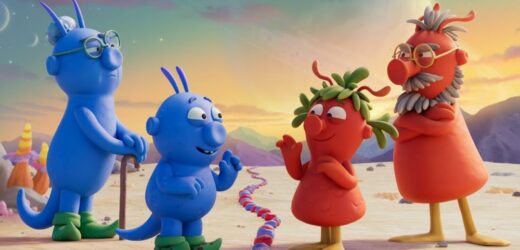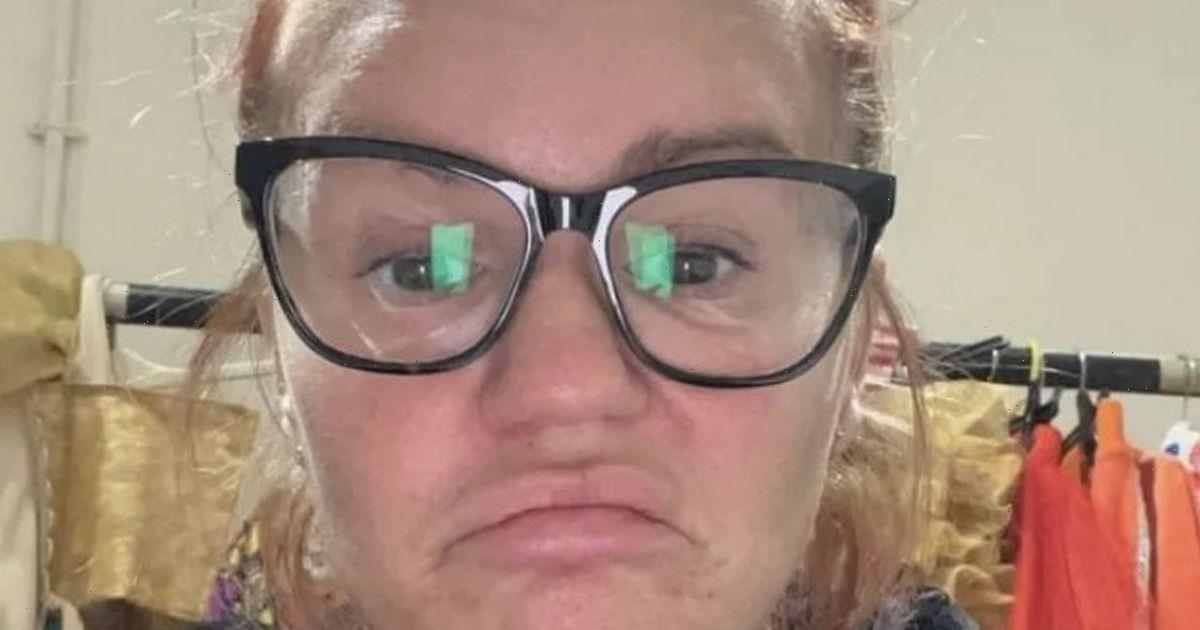Set to hit the BBC on Christmas Day in the U.K., “The Smeds and The Smoos” is the tenth in a series of screen adaptations based on books by iconic children’s publishing duo Julia Donaldson and Axel Scheffler. Starring the voices of “Bridgerton’s” Adjoa Andoh and comedian Bill Bailey, the film was produced by long-time Donaldson/Scheffler collaborators Magic Light Pictures.
The 30-minute adaptation tells the story of two adorable aliens, Bill and Janet, who come from warring clans. When they fall in love and run away together, their families reluctantly team up to find them and bring them home – unexpectedly becoming friends in the process.
Donaldson writes (usually in rhyming couplets) while Sheffler illustrates (although he has also written his own pictures books too). Together they hit gold over 25 years ago with “The Gruffalo,” spawning an Oscar-nominated film starring Helena Bonham Carter, an array of carefully-curated merchandise, a theme park ride and a sequel, “The Gruffalo’s Child” (which has also been adapted for screen by Magic Light.)
Despite their success, the duo remain utterly unpretentious about their work. “I mean, really, it’s totally pinched from ‘Romeo and Juliet’ but with a happy ending,” says Donaldson of “The Smeds and the Smoos.”
As for the clans’ names – Smeds and Smoos – Donaldson says there’s no more to it than they’re good rhyming words. “So many things that rhyme with blue,” she says pragmatically at a press event during a screening for the film. “Blue’s a brilliant word for rhyming. And red’s not too bad. They couldn’t really be the Yellows and Purples.”

The interplay between the whimsical Donaldson and Teutonic Scheffler, who have worked together now for around thirty years, is often as amusing as that between their characters, with the duo playfully sniping at each other throughout their joint appearances. “I do enjoy [drawing] made-up creatures because I have more freedom,” Scheffler says of drawing the many aliens that populate “The Smeds and the Smoos.”
“Although I never had complete freedom because Julia always tries to keep a bit of a control,” he adds drily. “So I knew these [aliens] had to have hair and shoes and jump about like kangaroos and things like that. But obviously Gruffalos and aliens give me a bit more freedom than foxes and squirrels, for instance. So I did enjoy drawing them and making them up.”
Since the 2009 adaptation of “The Gruffalo,” Donaldson and Sheffler have also had a long-standing partnership with Magic Light. The resulting films, which have starred some of Britain’s top talent from Olivia Colman to James Corden, are now a staple of the BBC’s annual Christmas fare.
While “The Gruffalo” was a combination of stop-motion sets and CGI characters, the later films are entirely CGI. “But we’ve worked very hard at keeping the aesthetic so all the stories feel part of the same universe, so you can watch any two together and it not feel like there’s an interruption,” explains Barney Goodland, a producer at Magic Light.
To that end, those looking closely at the Smeds and Smoos will notice their skin retains a Claymation feel, with thumbprints and irregularities in the surface. “We work hard to have that that kind of aesthetic feel,” says Goodland. “It feels tangible and it could be real. It’s the books come to life.”
Each Donaldson/Scheffler book inevitably presents some technical challenges in bringing to the screen, of course, whether it’s water, hair or, in the latest adaptation, slime. “Glurch, the slime planet was the most challenging for I think every department,” Goodland admits. The team started by living out every 5-year-old’s fantasy: buying tons of slime from the shops and playing with it using little figures. “[The slime] has got a slight life of its own,” he explains.
Donaldson and Scheffler are surprisingly hands-off when it comes to the adaptations, although everything is run past them for approval, starting with the screenplay. “When we go from script we show them the animatic, and then we show them parts of the animation. So they’re involved, but we first work on the story ourselves, and then have the discussion with them,” says Goodman of the process.
With Donaldson’s stories often told by an omniscient third-person narrator, lines sometimes have to be moved around and, where possible Goodman says, put in the mouths of the characters. Does tampering with Donaldson’s original text ever feel sacrilegious? “I don’t know of any other company that’s so faithful to the text,” says Magic Light co-founder Michael Rose. “We actually treat it like the Bible. So any even modifications to text or things we discuss in depth with Julia in advance.”
With Donaldson and Sheffler so prolific in their output (their latest effort, “The Baddies,” was published this year) one of the biggest difficulties for Magic Light is choosing which picture book to adapt next. Goodland says the team landed on “The Smeds and The Smoos” as the tenth adaptations because “It’s [set] in such an incredible world really, with unique characters.”
But given the story also touches on prejudice and intolerance – the Smoos judge the Smeds for their red hue and eating brown bread while the Smeds dislike the Smoos for their blue coloring and fondness for green tea – “The Smeds and The Smoos” is also timely. (It was completed shortly after the U.K. voted for Brexit in 2016, leading Scheffler to dedicate the book to “All the children of Europe”).
“Obviously, there is the theme of one person from one tribe and one person from another tribe,” says Andoh, who voices Grandmother Smoo in the film. “But I think beyond that there’s the ignorant prejudice that people can harbour about each other until they come together. And actually love and survival and kinship are the things that bind all of us.”
Read More About:
Source: Read Full Article


